Author: Mike Neville
A quintessential brewing ingredient, hops are typically dried after being harvested, at which point they’re ready to be used. Historically, whole cones were the standard in brewing, though over time, various alternative hop forms have been created with the overarching goal of brew day optimization, the most popular of which is the T-90 pellet.
Put simply, T-90 pellets are made from pulverized hops that get pressed through a pellet die and retain approximately 90% of the total cone weight, hence the name. In addition to taking up less space and being easier to manage, T-90 pellets more readily drop out of solution, creating a layer of trub that can easily be left behind when transferring wort or beer out of a vessel. A more recent development is LUPOMAX hops, which look similar to T-90 pellets though have a much higher concentration of lupulin with less vegetative matter, allowing brewers to use around 30% less while achieving similar potency levels.
I never had much of an issue with T-90 pellets, but I’ve used LUPOMAX hops quite a bit and my experience has been incredibly positive. With a past xBmt showing tasters could reliably distinguish an American Pale Ale made with T-90 hops from one made with LUPOMAX hops, I was curious if dry hopping an IPA with LUPOMAX at the recommended usage rate would be perceptibly different than dry hopping with T-90 pellets and put it to the test.
| PURPOSE |
To evaluate the differences between an American IPA dry hopped with either El Dorado T-90 pellets or LUPOMAX pellets.
| METHODS |
For this xBmt, I designed a simple American IPA recipe that I felt would allow any differences between the beers to shine.
I Want The Knife
Recipe Details
| Batch Size | Boil Time | IBU | SRM | Est. OG | Est. FG | ABV |
|---|---|---|---|---|---|---|
| 5.5 gal | 60 min | 45.2 | 7.1 SRM | 1.065 | 1.006 | 7.74 % |
| Actuals | 1.065 | 1.006 | 7.74 % | |||
Fermentables
| Name | Amount | % |
|---|---|---|
| Lamonta: Pale American Barley Malt | 5 lbs | 38.46 |
| Pelton: Pilsner-style Barley Malt | 5 lbs | 38.46 |
| Munich | 1.5 lbs | 11.54 |
| Vanora: Vienna-style Barley Malt | 1.5 lbs | 11.54 |
Hops
| Name | Amount | Time | Use | Form | Alpha % |
|---|---|---|---|---|---|
| El Dorado | 14 g | 60 min | Boil | Pellet | 13.8 |
| El Dorado | 28 g | 10 min | Boil | Pellet | 13.8 |
| El Dorado | 14 g | 5 min | Boil | Pellet | 13.8 |
| El Dorado LUPOMAX | 14 g | 5 min | Boil | Pellet | 17 |
| El Dorado | 14 g | 2 min | Boil | Pellet | 13.8 |
| El Dorado LUPOMAX | 14 g | 2 min | Boil | Pellet | 17 |
| El Dorado LUPOMAX 80 g OR T-90 Pellets | 113 g | 4 days | Dry Hop | Pellet | 13.8 |
Yeast
| Name | Lab | Attenuation | Temperature |
|---|---|---|---|
| Flagship (A07) | Imperial Yeast | 77% | 32°F - 32°F |
Notes
| Water Profile: Ca 81 | Mg 9 | Na 8 | Cl 45 | SO4 177 |
Download
| Download this recipe's BeerXML file |
After collecting the water for a single 10 gallon batch, I weighed out and milled the grain.
With the water properly heated, I incorporated the grains then checked to make sure the mash was at my target temperature.
During the mash rest, I prepared the kettle hop additions.
Once the mash was finished, I batch sparged to collect my target pre-boil volume then proceeded to boil the wort 60 minutes, adding hops at the times listed in the recipe.
When the boil was complete, I quickly chilled the wort.
Next, I transferred identical volumes of wort to separate fermenters.
A refractometer reading showed the wort was at my target OG.
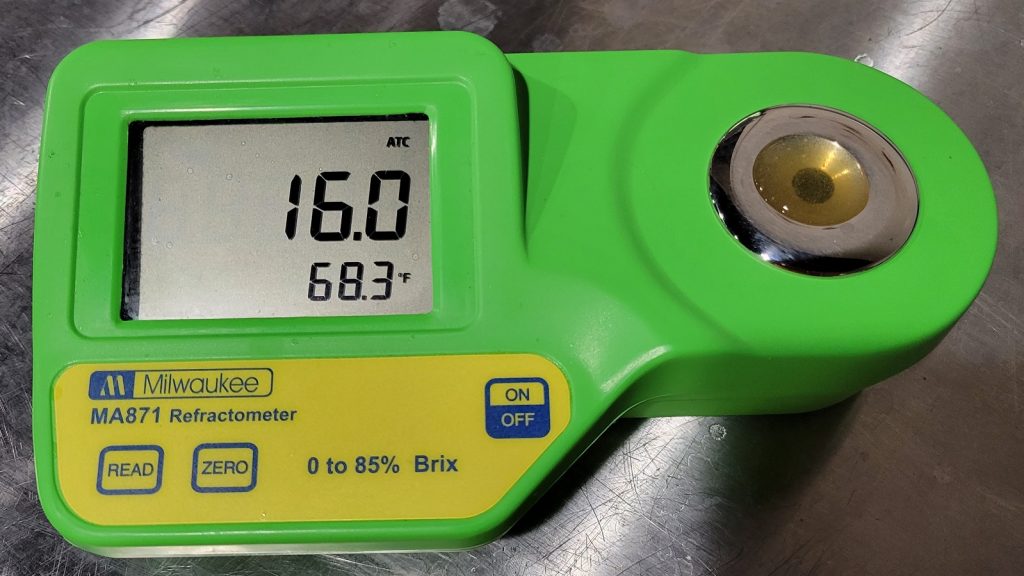
The fermenters were connected to my glycol unit and allowed to finish chilling to my desired fermentation temperature of 68°F/20°C, at which point I pitched a single pouch of Imperial Yeast A07 Flagship into each batch.
The beers were left to ferment for 5 days before I returned to add the dry hop additions. Per the recommendation of Haas, I went with 70% the amount of LUPOMAX as T-90 pellets.
Hydrometer measurements taken 4 days later showed a slight difference in FG.
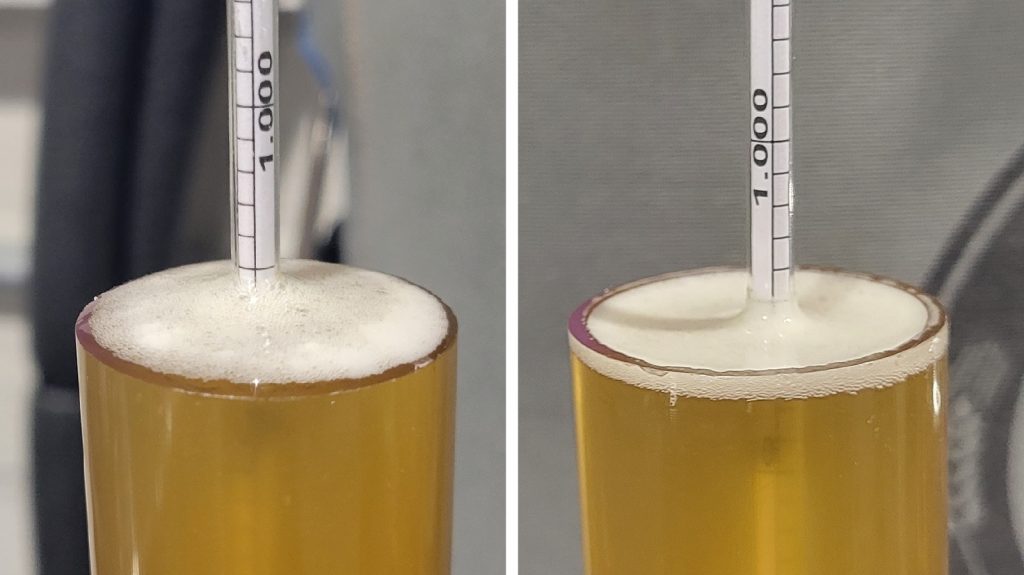
At this point, I proceeded to pressure transfer the beers to CO2 purged kegs.
The filled kegs were placed in my keezer and burst carbonated overnight before I reduced the gas to serving pressure. After 2 weeks of conditioning, they were carbonated and ready for evaluation.
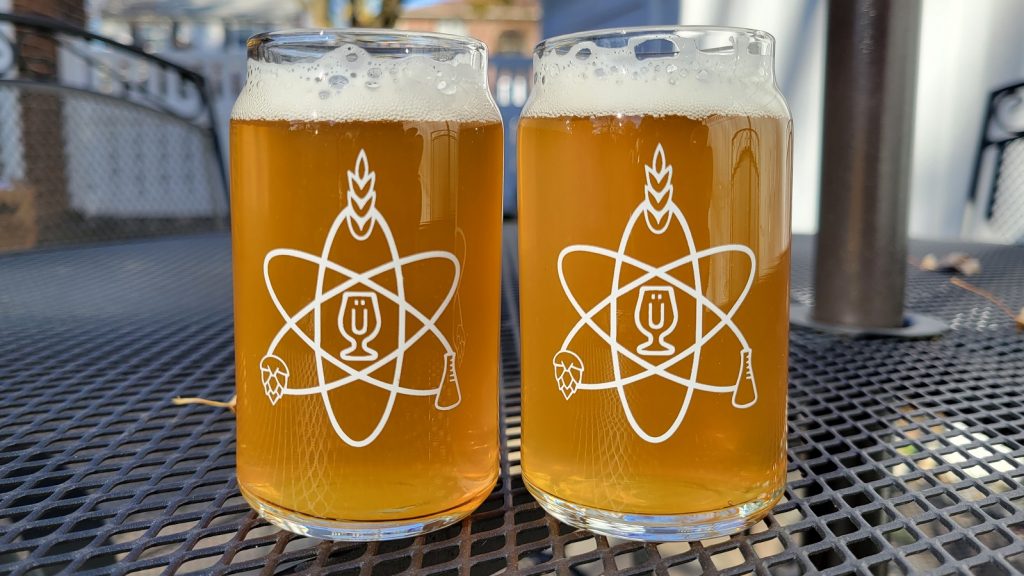
| RESULTS |
A total of 24 people of varying levels of experience participated in this xBmt. Each participant was served 2 samples of the beer dry hopped with T-90 pellets and 1 sample of the beer dry hopped with LUPOMAX in different colored opaque cups then asked to identify the unique sample. While 13 tasters (p<0.05) would have had to accurately identify the unique sample in order to reach statistical significance, only 4 did (p=0.98), indicating participants in this xBmt were unable to reliably distinguish an American IPA dry hopped with T-90 pellets from one dry hopped with 30% fewer LUPOMAX pellets.
My Impressions: Out of the 5 semi-blind triangle tests I attempted, I correctly identified the odd-beer-out 2 times. Despite knowing the variable, these beers tasted exactly the same to me, possessing the watermelon and low pear notes I expect from El Dorado.
| DISCUSSION |
It’s well established that dry hopping imparts beer with desirable hop character, which is all but necessary for modern IPA. While larger doses are associated with increased intensity, brewers run the risk of extracting unpleasant off-flavors due to the higher amount of vegetal matter being added to the beer. To combat this, Haas created LUPOMAX, a product the looks similar to T-90 but has a higher concentration of lupulin with 30% less plant material. Tasters in this xBmt were unable to reliably distinguish an American IPA dry hopped with T-90 pellets from one dry hopped with 30% fewer LUPOMAX pellets.
Considering the usage rates, these findings aren’t terribly surprising, as they support Haas recommendation to use 70% the amount of LUPOMAX as one would T-90 pellets. However, the apparent lack of a sensorial difference would also seem to indicate that neither beer had perceptible vegetal off-flavors, despite the T-90 batch being dry hopped with 30% more hops by weight.
As a homebrewer, I’m not particularly concerned about overall yield, so that doesn’t really play into my preference for LUPOMAX hops. Rather, I’m a fan of Haas’ claim of consistency over time, as it means I’m more likely able to reproduce recipes with confidence. While I have no problem with T-90 pellets, I can understand why larger brewers would find them useful, and I’ll definitely be keeping them stocked in my brewery.
If you have any thoughts about this xBmt, please do not hesitate to share in the comments section below!
Support Brülosophy In Style!
All designs are available in various colors and sizes on Amazon!
Follow Brülosophy on:
FACEBOOK | TWITTER | INSTAGRAM
If you enjoy this stuff and feel compelled to support Brulosophy.com, please check out the Support page for details on how you can very easily do so. Thanks!


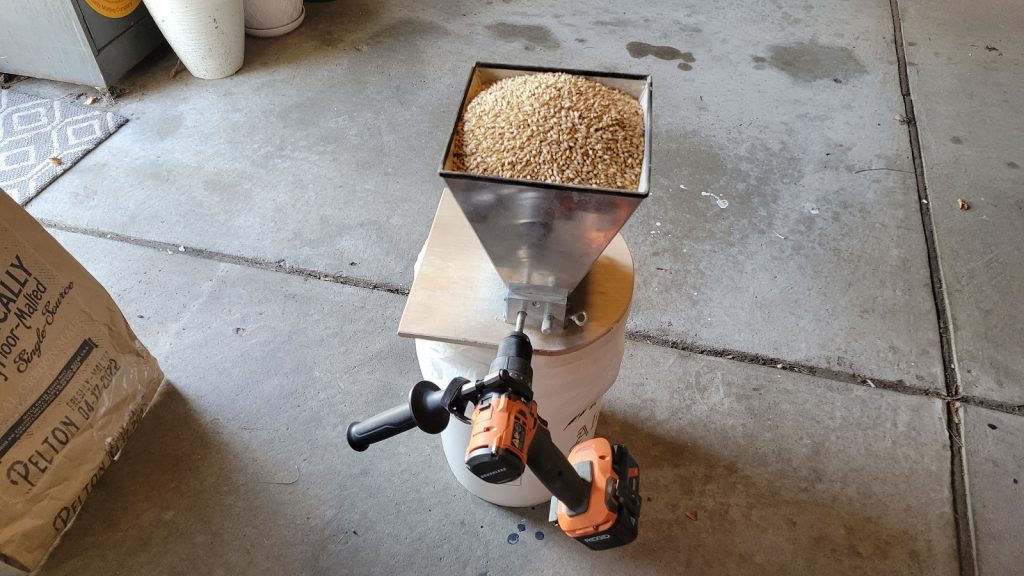
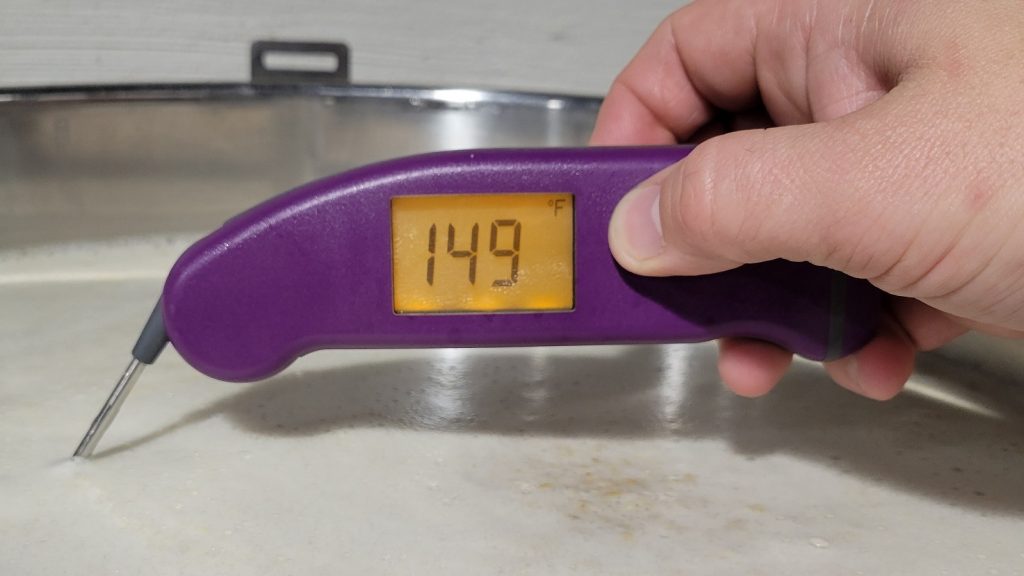
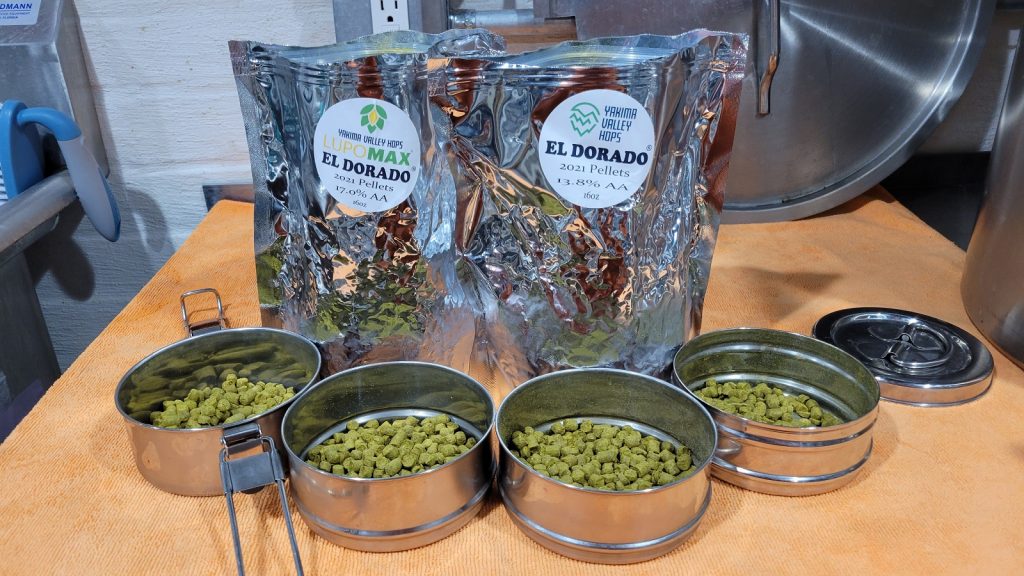
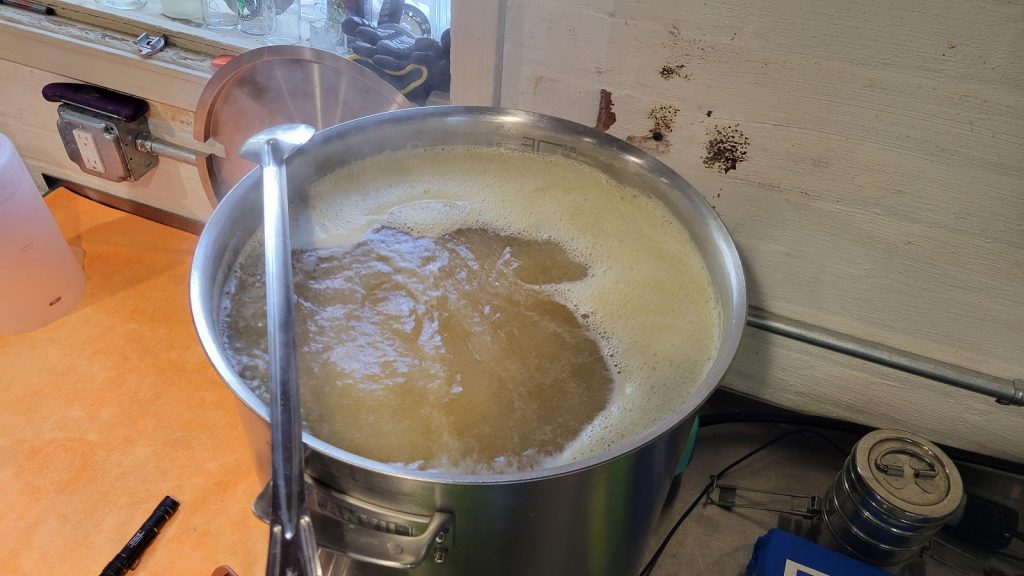
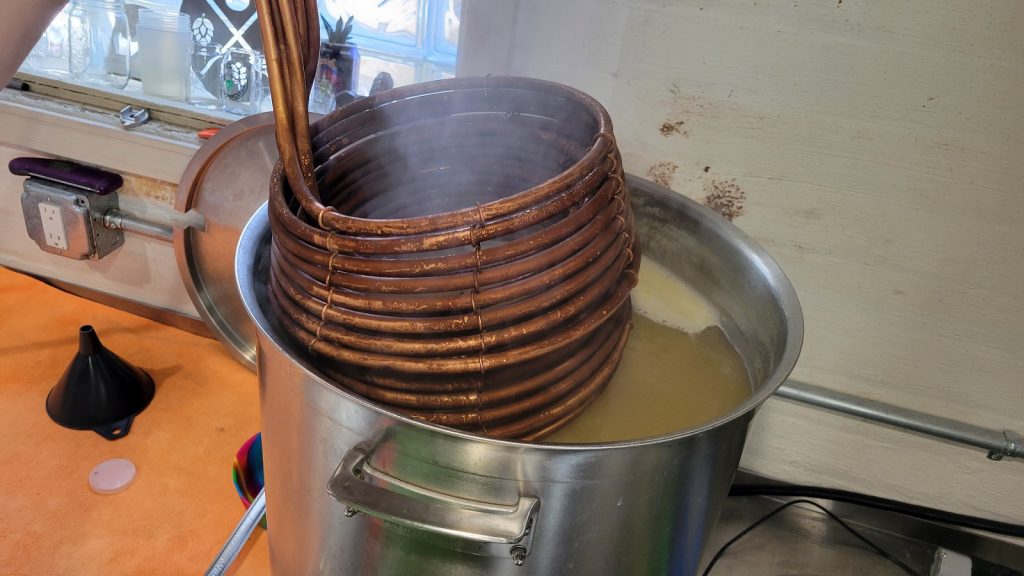
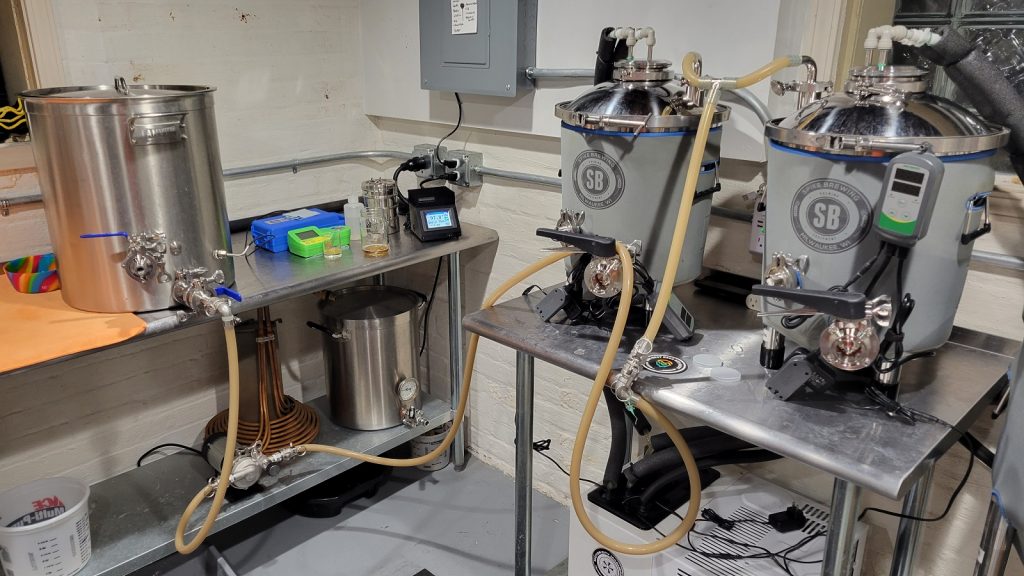
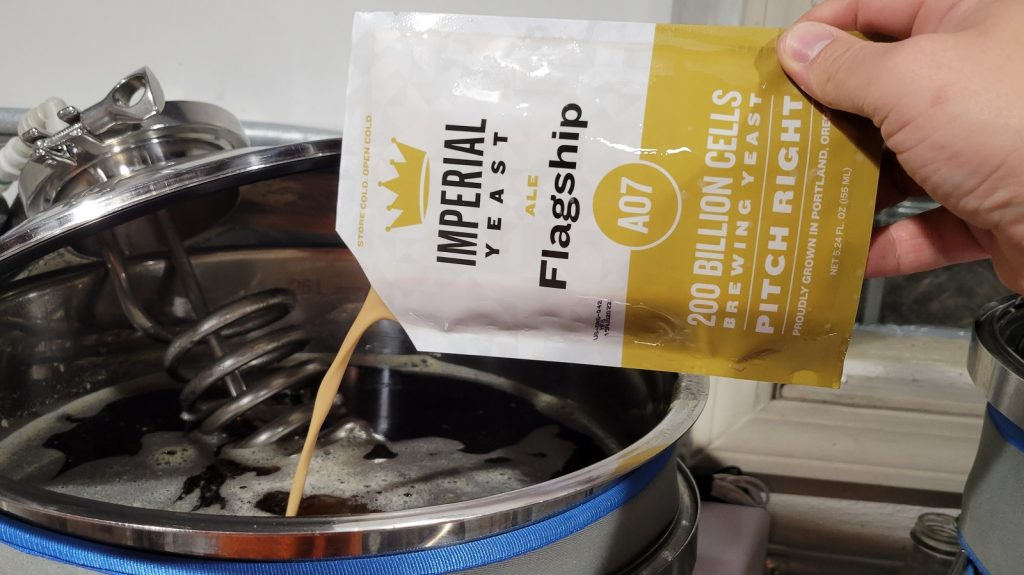

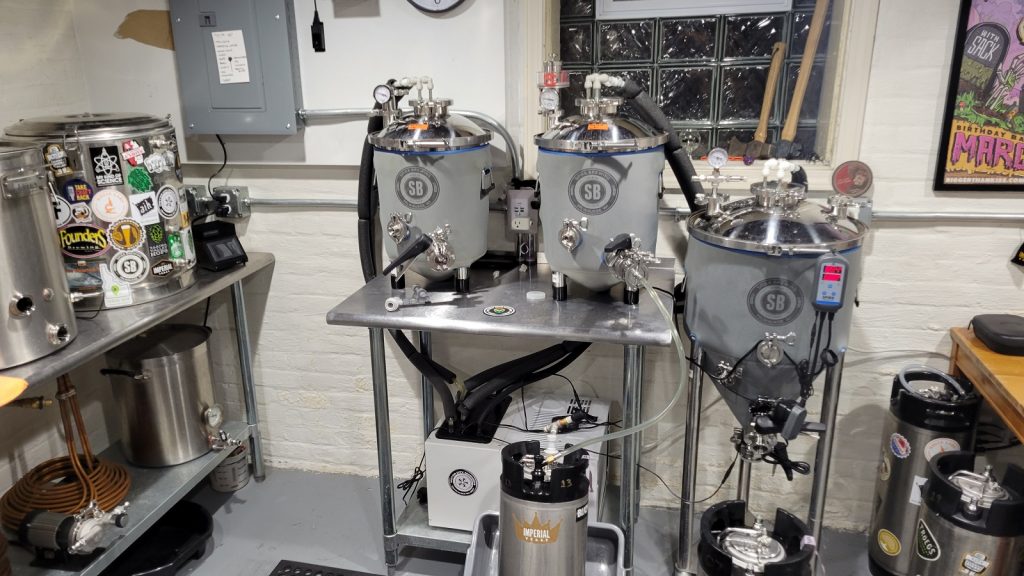











2 thoughts on “exBEERiment | Hop Comparison: T-90 vs. LUPOMAX When Used To Dry Hop An American IPA”
Since neither had a vegetal character/flavor can we assume this to be another example of an assumption that makes sense (i.e., adding more vegetal matter to the beer adds more vegetal flavor) but is not true? In other words, until proven otherwise, we might assume that hops do not add vegetal flavor. They may add vegetal in an enormous/humongous/ungodly/absurd hop addition, but such additions may be beyond any reasonable hop usage on any scale and thus are not worth practical consideration.
I really appreciate the number of these fallacies that Brulosophy has clarified.
That’s a bummer the tasters weren’t good enough to differentiate , I feel like there is a noticable difference. Also you didn’t specify your dry hopping technique but it would appear with that low of a gravity you got some hop creep going on